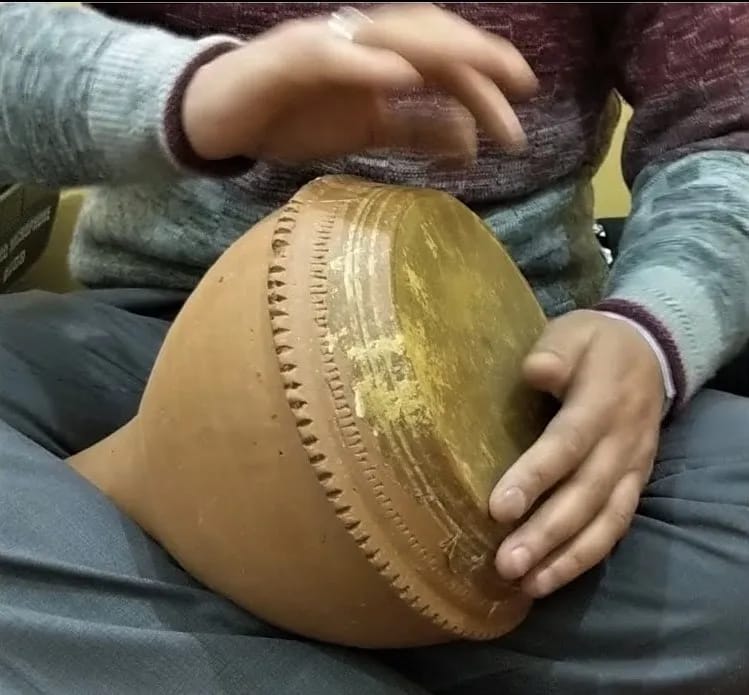The enchanting tale unfolds as an elderly artisan takes you on a nostalgic journey through the golden days of Kashmir’s Terracotta industry. The cultural richness and craftsmanship that once defined the valleys are now fading in the face of modern challenges.
By Khursheed Dar
In the vibrant heart of Kashmir’s bustling market, amid the lively symphony of vendors and an eclectic array of goods, serendipity led me to chance upon an elderly woman delicately arranging Terracotta Tambaknari and whimsical Piggies on her timeworn blanket. Little did I fathom that this fortuitous encounter would unfurl a spellbinding narrative, resonating with the golden days of the Terracotta industry nestled in the valleys of Kashmir.
Engaging in a conversation with the seasoned artisan, her eyes gleamed with the reminiscences of a bygone epoch. She embarked on a nostalgic odyssey, transporting me to the enchanting landscapes of her childhood, where the Terracotta industry burgeoned as a cultural cornerstone.

In those halcyon days, the art of Terracotta transcended mere craftsmanship; it embodied a way of life. Proficient artisans, akin to the woman before me, meticulously sculpted clay into intricate masterpieces, each narrating a tale of Kashmir’s opulent heritage. The locally known Tambaknari pottery adorned homes, markets, and royal palaces, etching an indelible mark on the tapestry of Kashmiri identity.
With intricate detail, the elderly woman recounted her youthful days as an apprentice, navigating the delicate dance of molding clay under the vigilant gaze of seasoned masters. She spoke of communal elation during festivals, where families congregated to revel in and showcase their finest Terracotta creations. It transcended mere profession; it metamorphosed into a celebration of artistry echoing through the corridors of generations.
The Terracotta industry burgeoned beyond a means of sustenance; it forged a communal bond binding the people of Kashmir. Each piece encapsulated the essence of the land—the majestic mountains, the flowing rivers, and the stories whispered through the ages. The industry thrived, supporting families and instilling a profound sense of pride in their cultural roots.
Modernization ushered in a wave of challenges that rattled the very foundations of traditional craftsmanship. Mass production and synthetic materials eclipsed the labor-intensive process of crafting Tambaknari, resulting in a gradual decline in demand.
However, as the woman’s narrative unfolded, a subtle melancholy infiltrated her voice. The echoes of laughter and the rhythmic hum of pottery wheels gradually yielded to a disheartening silence. The Terracotta industry, once the lifeblood of Kashmir, confronted an formidable adversary—the inexorable march of time and evolving societal dynamics.
Modernization ushered in a wave of challenges that rattled the very foundations of traditional craftsmanship. Mass production and synthetic materials eclipsed the labor-intensive process of crafting Tambaknari, resulting in a gradual decline in demand. The woman’s eyes reflected the collective sorrow of a community witnessing the gradual fading of their cultural heritage.
In a poignant moment, she spoke of her contemporaries who reluctantly abandoned their craft to embrace alternative livelihoods, relegating the Terracotta industry to the shadows of progress. The once vibrant markets, adorned with Terracotta treasures, now struggled to compete with mass-produced alternatives.
As the woman concluded her tale, a bittersweet ambiance lingered. The vivid hues of the past seemed to fade into sepia-toned memories. Yet, within this poignant reflection, there emerged a resilience—a determination to preserve the legacy of Terracotta against the eroding sands of time.

This encounter with the elderly woman and her tales became a poignant reminder of the delicate threads weaving the cultural fabric of our society. In a world driven by rapid transformations, it is imperative to recognize and cherish the invaluable heritage that artisans like her have bequeathed to us.
As I departed from the market, the echoes of the Terracotta industry lingered in my thoughts. The Tambaknari and Piggies on the elderly woman’s blanket were not mere objects for sale; they were vessels carrying the whispers of a fading era. In those terracotta forms, I discerned a plea—a plea to revive, preserve, and honor the artistry that once flourished in the enchanting valleys of Kashmir.
The views expressed in this article are solely those of the author and do not necessarily reflect the opinions or views of this Magazine.The author can be reached at [email protected]
Leave a Reply